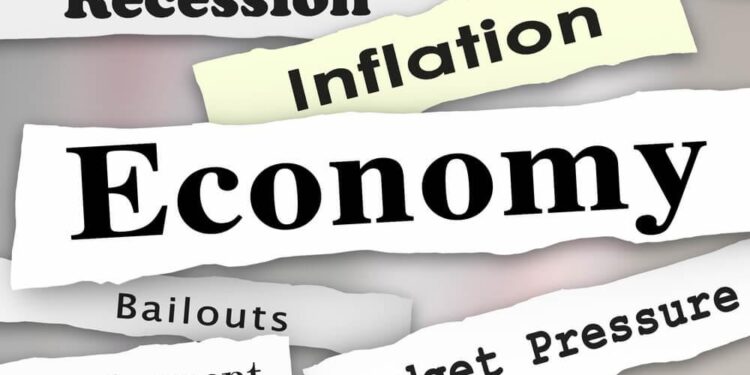As global markets grapple with volatility and inflationary pressures persist, a palpable sense of tension has settled over everyday life. CNN’s latest analysis delves into the economic forces driving this unease, revealing how factors like supply chain disruptions, labor shortages, and shifting monetary policies are converging to create widespread financial anxiety. Understanding these underlying economic dynamics offers crucial insight into why individuals and businesses alike are feeling the strain in today’s uncertain climate.
Economic Uncertainty and Its Impact on Everyday Life
The current economic landscape is marked by unpredictable market shifts, rising inflation, and volatile employment rates, all contributing to the everyday tension felt by millions. Consumers are facing higher costs for essentials like food, fuel, and housing, forcing many to tighten budgets and reconsider spending habits. This environment of uncertainty extends beyond pocketbooks, influencing mental health and overall well-being as people grapple with the fear of job loss or reduced income. Households are increasingly prioritizing financial security, holding back on big purchases and reassessing long-term plans such as education, travel, or homeownership.
Businesses, too, are navigating these choppy waters with cautious optimism. Supply chain disruptions and fluctuating demand have pushed many companies to adapt rapidly, often passing costs onto consumers or freezing hiring. The following table highlights key economic indicators reflecting this tension:
| Indicator | Current Status | Impact on Consumers |
|---|---|---|
| Inflation Rate | 7.6% (Y-o-Y) | Price increases on everyday goods |
| Unemployment Rate | 4.9% | Job market uncertainty |
| Consumer Confidence | Index at 85 | Reduced spending propensity |
- Rising bills strain household budgets.
- Delayed investments challenge future growth.
- Mental stress increases due to financial unpredictability.
How Inflation and Wage Stagnation Fuel Public Anxiety
The surge in consumer prices over the past few years has eroded purchasing power across nearly every demographic, amplifying economic unease among the public. While inflation drives up costs for essentials like food, housing, and fuel, wages have stubbornly failed to keep pace, leaving families caught in an ever-tightening squeeze. This disconnect intensifies the stress felt by many households, contributing to a pervasive sense of financial insecurity that clouds everyday decisions and long-term planning.
Key factors exacerbating the tension include:
- Rising grocery bills outpacing income gains
- Stagnant wage growth despite robust job markets
- Increased cost of living in urban centers
- Reduced savings and growing debt burdens
| Year | Average Wage Growth | Inflation Rate | Real Income Change |
|---|---|---|---|
| 2021 | 3.2% | 4.7% | -1.5% |
| 2022 | 3.8% | 6.5% | -2.7% |
| 2023 | 4.0% | 5.2% | -1.2% |
With real wage growth lagging behind inflation consistently, many workers are effectively earning less in terms of what their dollars can buy. This disparity not only affects household budgets but also contributes to broader societal anxiety as people worry about maintaining their standard of living amid unpredictable economic shifts.
Strategies for Navigating Financial Stress in a Volatile Economy
In times of economic turbulence, one of the most effective ways to regain control is by implementing practical financial strategies that can cushion the impact. Experts recommend starting with a clear budget – identifying fixed versus variable expenses helps to reveal areas where spending can be trimmed without sacrificing essentials. Prioritizing debt repayment, especially high-interest loans, not only reduces financial strain in the short term but also builds resilience for future uncertainties.
Additionally, diversifying income streams has become increasingly important. Whether through freelance projects, part-time work, or passive income investments, multiple revenue sources can provide a safety net. Below are some key tactics to consider:
- Emergency fund buildup: Aim for at least 3-6 months of living expenses reserved.
- Regular financial check-ins: Make adjustments as the economy shifts.
- Mindful spending: Avoid impulsive purchases driven by stress or uncertainty.
- Consulting professionals: Financial advisors can tailor plans to personal situations.
| Strategy | Action Steps | Expected Impact |
|---|---|---|
| Budget Creation | Track monthly expenses, cut non-essential costs | Improved cash flow, less financial anxiety |
| Debt Reduction | Focus on high-interest debts first | Lower monthly payments, increased savings |
| Diversified Income | Explore side gigs or investments | Greater financial security |
To Wrap It Up
As economic pressures continue to mount, understanding the underlying factors driving today’s widespread tension is crucial. From inflation to labor market shifts, the interconnected challenges shape not only personal lives but also the broader societal landscape. While the path forward remains uncertain, clear-eyed analysis of these economic dynamics provides essential context for navigating the uneasy times ahead.































